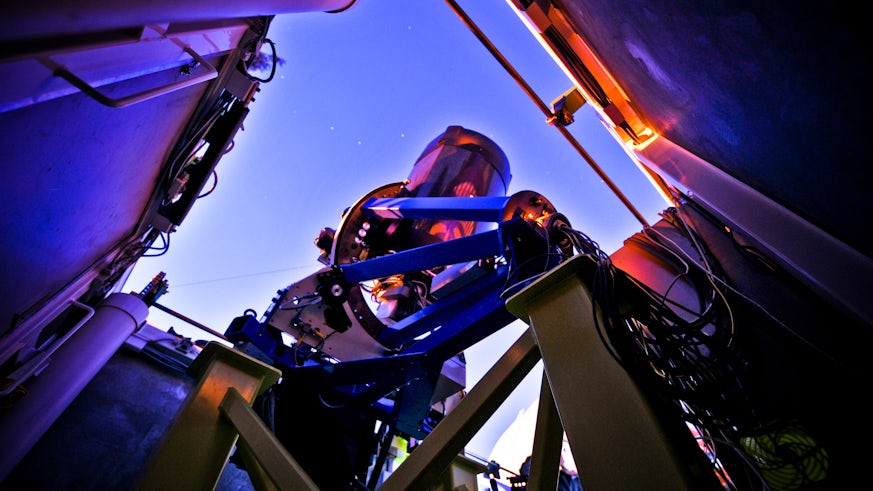Public to join the hunt for Einstein's gravitational waves
24 November 2017

Scientists are enlisting the help of the general public to search for signs of gravitational waves being emitted across the Universe.
A brand new citizen science project led by Cardiff University, in partnership with Las Cumbres Observatory (LCO), will give the general public access to images from a global network of telescopes to help search for the cataclysmic events that lead to the production of the space-time ripples.
The search will compliment efforts by the Laser Interferometer Gravitational-Wave Observatory (LIGO) and Virgo teams who currently operate highly sensitive detectors in the US and Italy, and have already detected five gravitational signals to date.
Once the LIGO and Virgo teams detect a potential gravitational signal, they will immediately alert members of the astronomy community who will point their telescopes at a certain area of the sky to try and observe the violent cosmic events that lead to the production of gravitational waves.
These could be the merger of two black holes, the spectacular collision of two neutron stars, or possibly even the dramatic and destructive explosions of stars as they enter the final stages of their lives.
Once a potential signal is detected the public will be able to log in to an online portal and view images obtained by LCO’s network of telescopes from around the world. They will be presented with a series of before and after images of that specific point in the sky and asked to look for changes that may have occurred. If there’s anything of interest in the images, the public will be able to keep track of the object as it changes.

“Through our project anyone around the world will be able to help find the sources of gravitational waves, and investigate them further. We’re looking forward to including many more people in this search, and hopefully inspiring some of the next generation of scientists,”
Director of Recruitment and Admissions
Head of Public Engagement
First predicted by Albert Einstein over 100 years ago, gravitational waves are tiny ripples in space-time that are emitted from violent events such as the collision of black holes or neutron stars. The ripples travel through space-time creating tiny distortions in space-time itself, which can be detected on Earth with highly sensitive detectors.
In October this year, scientists detected gravitational waves emitted from colliding neutron stars for the first time, using both gravitational wave detectors and traditional light-based telescopes.
The citizen science project is just one Cardiff University-led education project that has been awarded observing hours as part of LCO’s global education programme. For the first time in its history, LCO has offered free observing time - 1,000 hours on its network of 0.4-meter telescopes during 2018 - for educators around the world to apply for, to use in education and outreach projects.
Universe in the Classroom is an initiative that provides school children with access to LCO’s telescopes, helping to improve teaching methods and modernise the way STEM subjects (science, technology, engineering and mathematics) are taught to young children.
The Faulkes Telescope Project has also been afforded new observing hours by the LCO. The aim of this project is to provide free access to robotic telescopes and a fully supported education programme to encourage teachers and students to engage in research-based science education.

“We are delighted to be supporting so many high quality education programmes using our unique telescope network. I am particularly pleased to see that Wales is punching above its weight, providing so many opportunities for young people and the general public to be inspired by using robotic telescopes,”
These 3 groups, all of whom have their education offices within Cardiff University’s School of Physics and Astronomy, will join 14 other education partners from around the world in using Las Cumbres Observatory in 2018.





